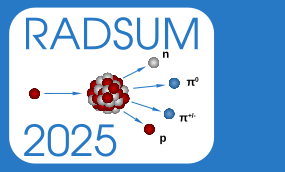Speaker
Description
During operation, ITER superconductive (SC) magnets are subjected to significant thermal loads which mostly result from the deposition of energy by plasma-generated neutrons, as well as from secondary gamma radiation produced when neutrons interact with matter. In addition to thermal loads, total neutron fluence and absorbed dose in key magnets components like the magnet’s insulators should be of concern to every fusion SC magnet designer.
Using for the first time a full-tokamak 360° model, a comprehensive and detailed assessment of the heating deposited during 500 MW DT plasma operation (normal operation) on ITER SC magnets was computed. This allowed to fully take into account the asymmetries of ITER’s geometry and highlight the impact of various components, such as the NBI and the EC Upper Launcher, on the heating patterns of the magnets. Furthermore, the contribution of activated cooling water in the tokamak was also considered and was found to be a substantial source of heating for all the SC magnets, except for the Toroidal Field Coils (TFCs). Some lesson learnt related to effective nuclear shielding for SC magnets in a tokamak environment are also presented.
